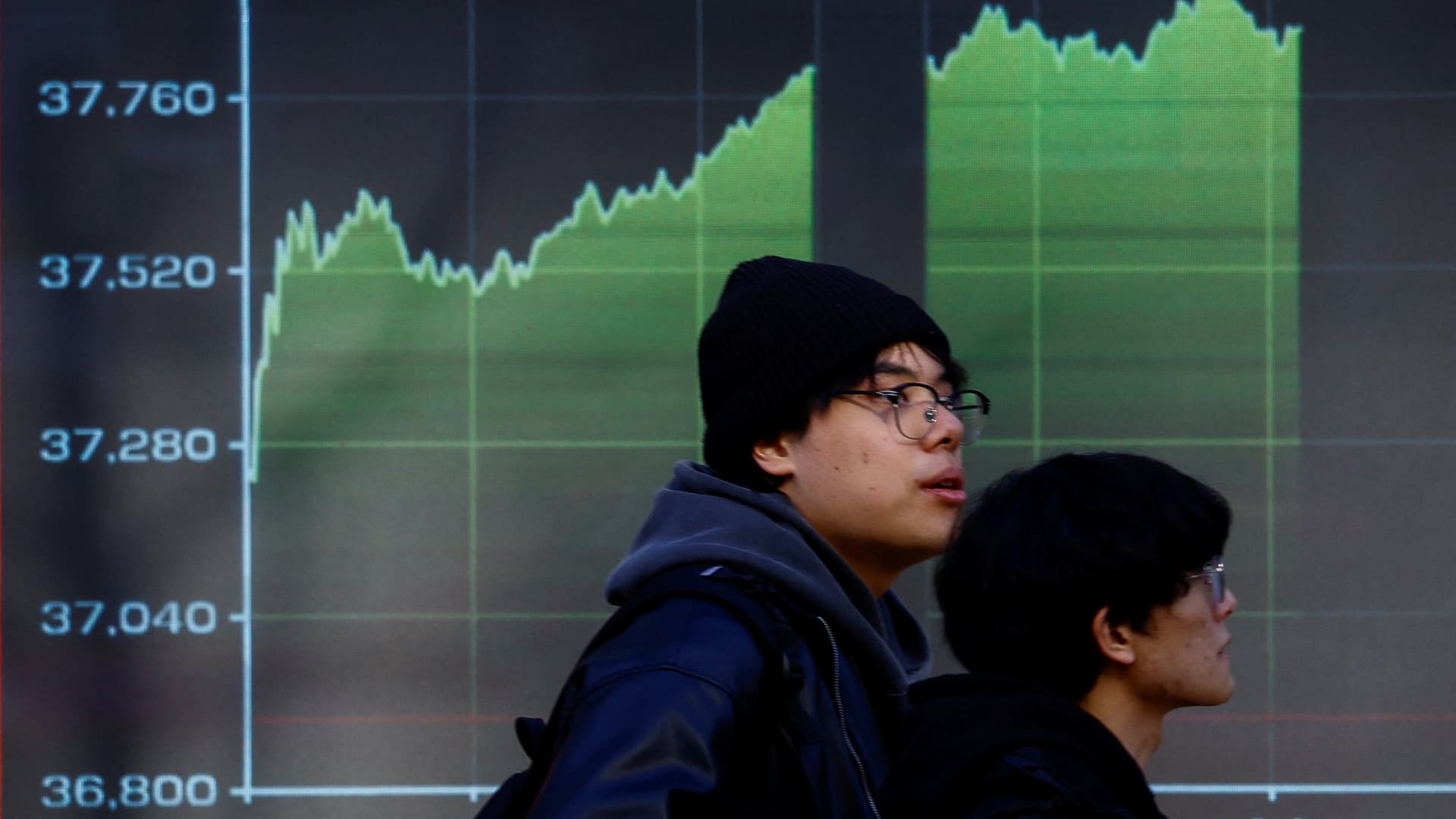U.S. equities aren’t the only ones on a bull run — the Japanese stock market is also enjoying an upward climb. Last week, Japan’s benchmark Nikkei 225 Index hit its highest level since 1989. This comes more than three decades after the economy began to suffer from stagflation. The Nikkei 225 is now up more than 19% year to date and nearly 39% over the last 12 months. This has outpaced the S & P 500′ s 7.4% gain in 2024 and 30.7% in the past year. .N225 .SPX 1Y mountain The Nikkei 225 versus the S & P 500 Pessimism around neighboring China’s sluggish economy is also providing a boost to the market. Global investors have been increasing their exposure to Japan in lieu of Chinese names. “It is the case that the Japanese stock market remains almost exclusively driven by foreign money,” Jefferies head of global equity strategy Christopher Wood wrote in a March 7 note. According to Wood, foreign investors now own almost a third of the Japanese stock market, a dramatic rise from the 4% level in 1989, when the asset bubble reached its peak. High concentration The Japanese and U.S. rallies share some overlapping characteristics. Both have been powered by a small group of large-cap stocks benefiting from AI-related enthusiasm. In Japan’s case, just four companies — Tokyo Electron , SoftBank , Fast Retailing and Advantest — are the core drivers of growth, Wood said. These stocks comprise 53% of the Nikkei’s 2024 rally, he added. Goldman Sachs also named a slightly broader ” Seven Samurai ” group of large-cap names fueling a narrow rally. The group includes Tokyo Electron, Advantest, Disco, Screen Holdings, Toyota Motor, Subaru and Mitsubishi. “Concentration [is] not only an American phenomenon,” according to Strategas. Morgan Stanley noted that quality stocks have outperformed the broader market so far in 2024. The firm defined the top three quality factors in the Japanese market as: Safety indicator: stocks with a lower debt-to-equity ratio Profit margin level: companies with high estimated return on equity Earnings stability: lower earnings volatility among higher-quality stocks To be sure, high-quality stocks are currently trading at an expensive price-to-book ratio, according to the firm. The beta value, or measured volatility and risk, is also increased for high-quality names, meaning they are more susceptible to underperformance in the case of an economic downturn. “We believe the quality ‘index’ is performing well because it resembles a long-only market-cap weighted portfolio. However, it is necessary to be aware that the quality ‘index’ is unlikely to sustain relatively positive performance when rotation occurs in the market dominated by large-cap stocks,” Morgan Stanley MUFG analyst Makoto Furukawa said in a Wednesday note. Analysts at Citi are also concerned that Japanese tech sectors are reaching peak valuations. “If the gains for Japan equities as a whole were to peak for now and index buying moves to grind to a halt, then we would likely see changes in stock selection trends that have hitherto almost entirely favored large caps,” Citi analyst Ryota Sakagami wrote in a note on March 5. For U.S.-based investors, the iShares MSCI Japan ETF (EWJ) provides exposure to large-cap Japanese stocks. The fund has an expense ratio of 0.5% and touts a year-to-date total return of nearly 11%. The iShares JPX-Nikkei 400 ETF (JPXN) tracks both large- and mid-cap companies. JPXN carries an expense ratio of 0.48%, and it has a total return of about 10.2% in 2024. Transitioning out of deflation Rate policy has been another big factor in the recent market rally. In Japan, however, investors are cheering the news that the central bank is finally going to raise interest rates from their current negative levels, indicating a shift toward inflation after decades of chronic deflation. Because prices fell for such an extended period, consumer spending and wage growth remained depressed, which also hurt corporate profits. Economists predict that the Bank of Japan could end negative rates as soon as April — which would mark the first rate increase since fiscal year 2007. Citi underscored the tightening monetary policy as a major driver of the Japanese equity rally. The firm forecasts the Nikkei to hover near 40,500 for a bit before continuing its rally this year to the 45,000 level. “For Japanese equities to rise further than required simply to catch up with the US market would need the type of positive catalysts unique to Japan … Such as a recovery in internal demand and sustained inflation, and we think it will be some time longer before there is confirmation of such catalysts,” said Citi’s Sakagami.
This story originally appeared on CNBC

